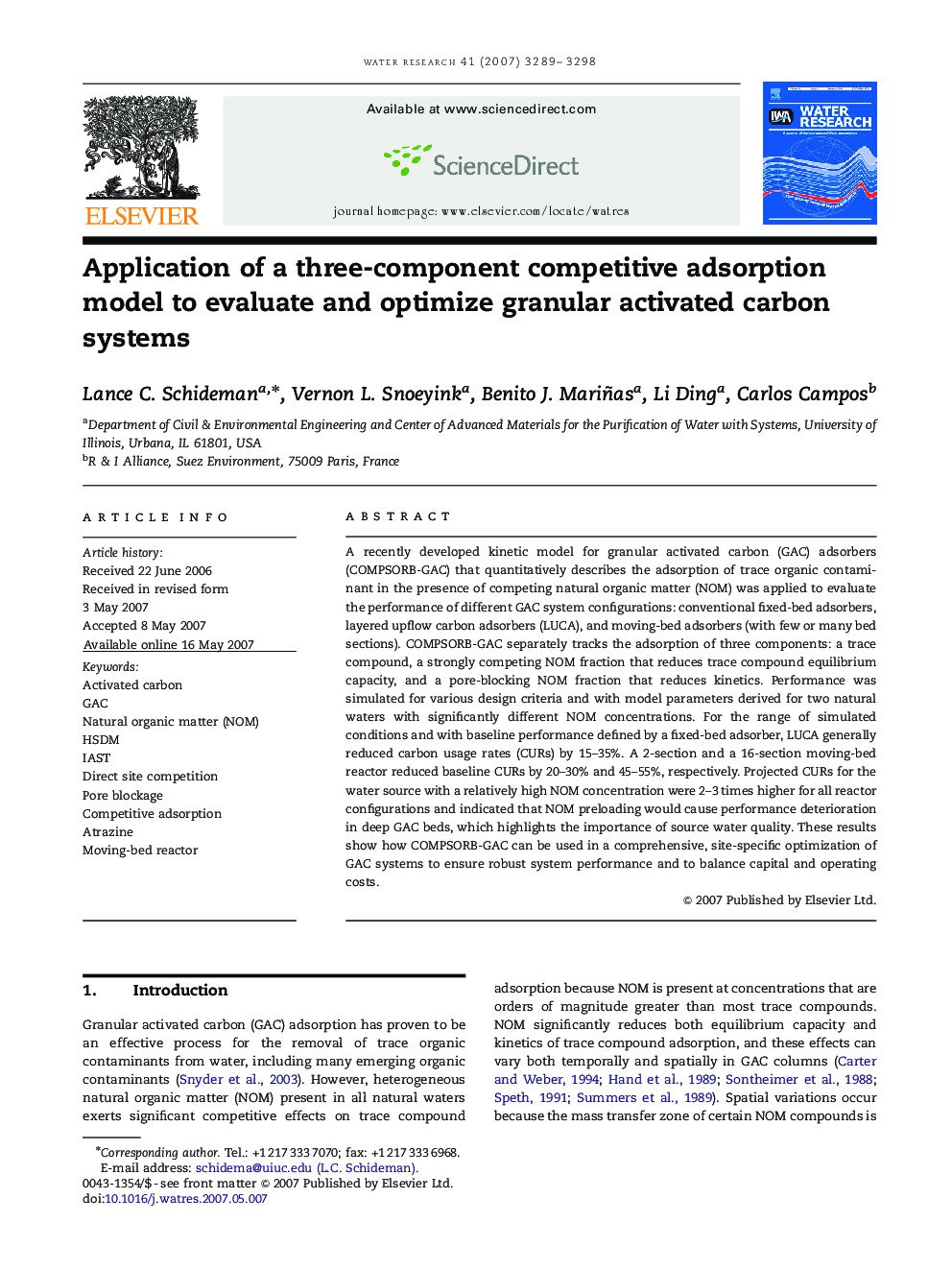| Article ID | Journal | Published Year | Pages | File Type |
|---|---|---|---|---|
| 4486101 | Water Research | 2007 | 10 Pages |
A recently developed kinetic model for granular activated carbon (GAC) adsorbers (COMPSORB-GAC) that quantitatively describes the adsorption of trace organic contaminant in the presence of competing natural organic matter (NOM) was applied to evaluate the performance of different GAC system configurations: conventional fixed-bed adsorbers, layered upflow carbon adsorbers (LUCA), and moving-bed adsorbers (with few or many bed sections). COMPSORB-GAC separately tracks the adsorption of three components: a trace compound, a strongly competing NOM fraction that reduces trace compound equilibrium capacity, and a pore-blocking NOM fraction that reduces kinetics. Performance was simulated for various design criteria and with model parameters derived for two natural waters with significantly different NOM concentrations. For the range of simulated conditions and with baseline performance defined by a fixed-bed adsorber, LUCA generally reduced carbon usage rates (CURs) by 15–35%. A 2-section and a 16-section moving-bed reactor reduced baseline CURs by 20–30% and 45–55%, respectively. Projected CURs for the water source with a relatively high NOM concentration were 2–3 times higher for all reactor configurations and indicated that NOM preloading would cause performance deterioration in deep GAC beds, which highlights the importance of source water quality. These results show how COMPSORB-GAC can be used in a comprehensive, site-specific optimization of GAC systems to ensure robust system performance and to balance capital and operating costs.
